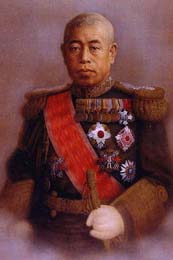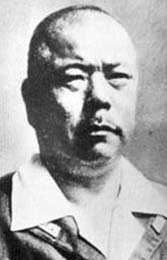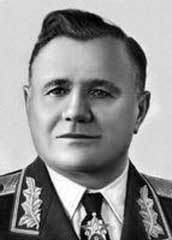highly effective C-in-C of the Combined Fleet, the Japanese Navy's front-line battle force, 1939-43 and principal architect of Japanese naval strategy during the period; had been largely responsible for the development of Japan's naval air forces between the wars and had also studied and seen diplomatic service in the US before 1935, when his intransigent opposition to the extension of limitations on the Japanese fleet at the London Naval Conference brought him into the international limelight; as deputy Navy Minister from 1937, became politically unpopular for his opposition fo the idea of armed conflict with the United States, the Soviet Union or Britain; also opposed Japan's joining the Axis during 1938. Nevertheless appointed to command the Combined Fleet in 1939, wsas the originator of the plan for the attack on Pearl Harbor, although he continued to agree with a number of senior naval officers who doubted Japan's ability to win a full-scale war against the huge resources of the United States; after the US entry into the war, continued to direct Japan's naval and air strategies, abeit with an increasingly fatalist pessimism; even after the decline in Japan's fortunes following Midway, retained his great reputation, both at home and among Japanese forces; it was therefore a great blow to Japan's strategic direction as well as to morale, when Magic intelligence intercepts revealed his movements during April 1943, and his aircraft was ambushed by raiding P-38 fighters while on an inspection tour in the Solomons.

highly regarded Japanese general, with a considerable reputation as a strategist, served in the Russo-Japanese War, World War I and the Sino-Japanese war before being appointed Inspector-General of Japanes aircraft in 1940; as the end of the year was sent by Gen Tojo on a special military mission to Rome and Berlin, where he med Mussolini and Hitler; his conclusions, hardly welcomed by the extreme militarist Tojo, warned against a war with Britain or the US until Japan's Army and Air Forces could be modernized; when war in the Pacific was declared in December 1941, was in command of the 25th Army, with orders to invade Malaya and capture Singapore; the decisive success of the Japanese campaign in Malaya and Singapore, which fell on February 15, 1942, earned him the nickname 'Tiger of Malay' though hsi transfer to command of the 1st Army Group in Manchukuo kept him away from the Pacific campaigns of 1942. After the fall of Gen Tojo's government in July 1944, was recalled to command Japanese forces in the Philippines; charged with the defense of the extensive archipelago against a very large Allied Southwest Pacific force under Gen MacArthur, his flexible tactics and tenacious resistance were finally unsuccessful and he was forced to surrender first the island of Leyte and then the major island of Luzon; he himself surrendered on September 2 at Baguio, with the remains of his army; after the war, ws brought before a court in Manila, convicted of war crimes and was hanged in February 1946; this has been a subject of controversy ever since.

Soviet front commander who first saw service as a cavalry officer with the Tsarist armies in WWI and entered the Red Army in 1918; commanded the 6th Cossack Division for the occupation of Poland, served in the Far East in 1940-1 and was then transferred to the Bryansk Front in August 1941 after the German invasion; he and Konev were criticized by Marshal Zhukov for their failure to hold their common front against the German drive on Moscow in October, and was relieved of active command for a year; in August 1942 was appointed to command the Southeast Front (later enlarged to include the Stalingrad Front) and directed the encirclement of the 6th Army there; subsequently commanded the Kalinin and 2nd Baltic Fronts.
